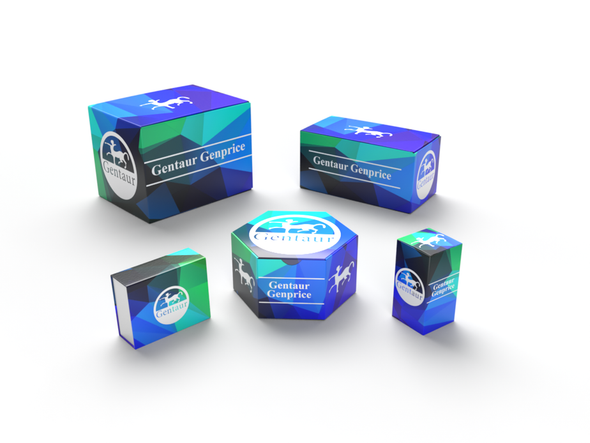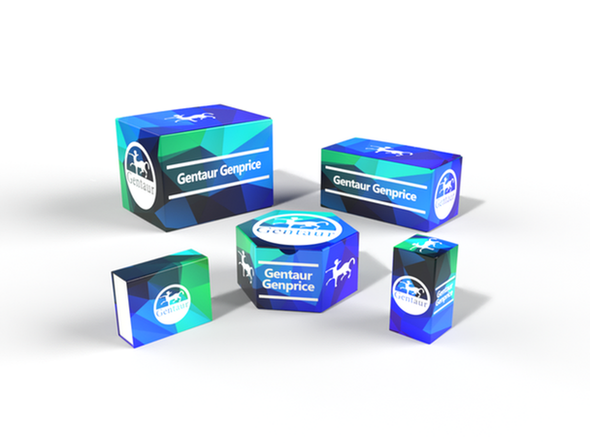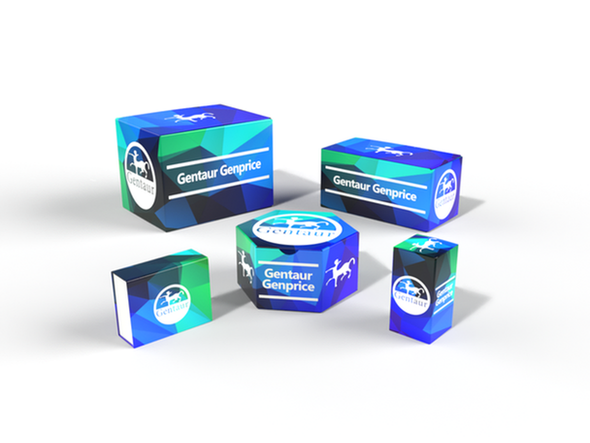749
Human Beta-klotho (KLB) ELISA Kit | KTE61909
- SKU:
- 749-KTE61909
- Availability:
- Usually ships in 5 working days
Description
Human Beta-klotho (KLB) ELISA Kit | KTE61909 | Gentaur UK, US & Europe Distribution
Application: This Human Beta-klotho (KLB) ELISA Kit employs a two-site sandwich ELISA to quantitate KLB in samples. An antibody specific for KLB has been pre-coated onto a microplate. Standards and samples are pipetted into the wells and anyKLB present is bound by the immobilized antibody. After removing any unbound substances, a biotin-conjugated antibody specific for KLB is added to the wells. After washing, Streptavidin conjugated Horseradish Peroxidase (HRP) is added to the wells. Following a wash to remove any unbound avidin-enzyme reagent, a substrate solution is added to the wells and color develops in proportion to the amount of KLB bound in the initial step. The color development is stopped and the intensity of the color is measured.
Detection Method: Colorimetric
Conjugate: N/A
Sample Type: Cell culture supernatants#Serum#Plasma#Other biological fluids
Assay Type: Multiple steps standard sandwich ELISA assay with a working time of 3-5 hours. It depends on the experience of the operation person.
Kit Component: • Human Beta-klotho microplate
• Human Beta-klotho standard
• Human Beta-klotho detect antibody
• Streptavidin-HRP
• Standard diluent
• Assay buffer
• HRP substrate
• Stop solution
• Wash buffer
• Plate covers
Features & Benefits: Human Beta-klotho (KLB) ELISA Kit has high sensitivity and excellent specificity for detection of Human KLB. No significant cross-reactivity or interference between Human KLB and analogues was observed.
Calibration Range: Please inquire
Limit Of Detection: Please inquire
Usage Note: • Do not mix components from different kit lots or use reagents beyond the kit expiration date.
• Allow all reagents to warm to room temperature for at least 30 minutes before opening.
• Pre-rinse the pipet tip with reagent, use fresh pipet tips for each sample, standard and reagent to avoid contamination.
• Unused wells must be kept desiccated at 4 °C in the sealed bag provided.
• Mix Thoroughly is very important for the result. It is recommended using low frequency oscillator or slight hand shaking every 10 minutes.
• It is recommended that all samples and standards be assayed in duplicate or triplicate.
Storage Instruction: The unopened kit should be stored at 2 - 8°C. After opening, please store refer to protocols.
Shipping: Gel pack with blue ice.
Precaution The product listed herein is for research use only and is not intended for use in human or clinical diagnosis. Suggested applications of our products are not recommendations to use our products in violation of any patent or as a license. We cannot be responsible for patent infringements or other violations that may occur with the use of this product.
Background: KLb encodes a 1, 043-amino acid protein that shares 41.2% identity with mouse Kl. Like Kl, Klb contains an N-terminal signal sequence, followed by 2 tandemly repeated glycosidase-like domains, a C-terminal transmembrane domain, and a short cytoplasmic tail. Both Kl and Klb lack 2 key glutamates in the predicted active centers of the glycosidase-like domains. Northern blot analysis of adult mouse tissues showed that Klb was predominantly expressed in liver and pancreas, with lower levels in skin and weak expression in stomach, skeletal muscle, small intestine, and lung. In mouse embryos, Klb expression became detectable at day 11 and increased in intensity as development progressed. In situ hybridization of mouse embryos revealed strong Klb expression in yolk sac, gut, brown and white adipose tissue, liver, and pancreas.
Alternative Names: KLB; BKL; MGC142213; klotho beta like
Search name: KLB; BKL; MGC142213; klotho beta like
Tag: KLB










